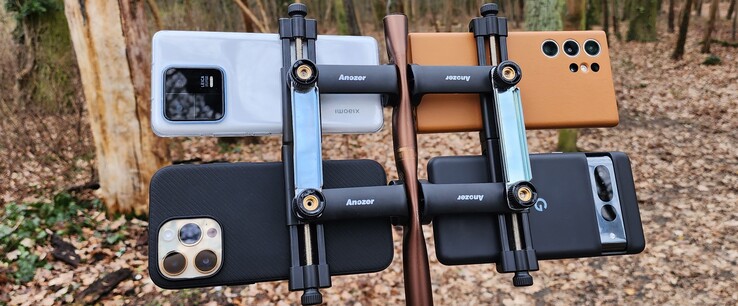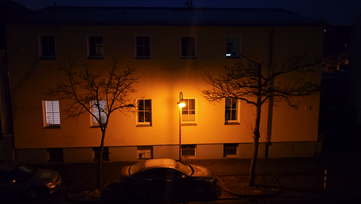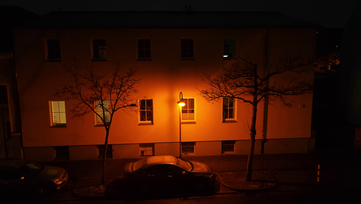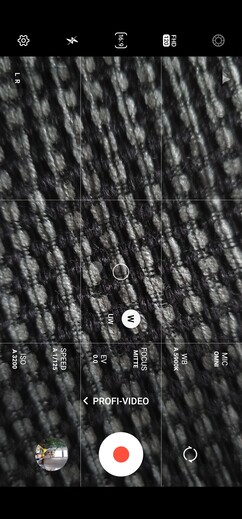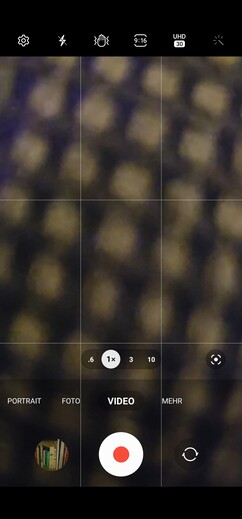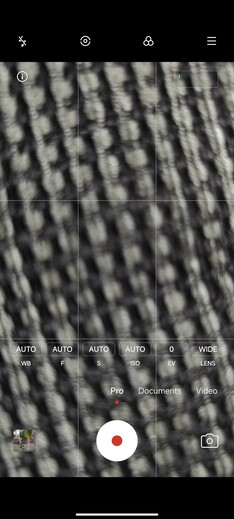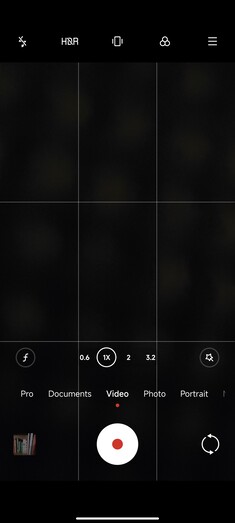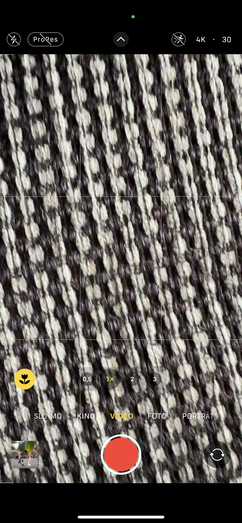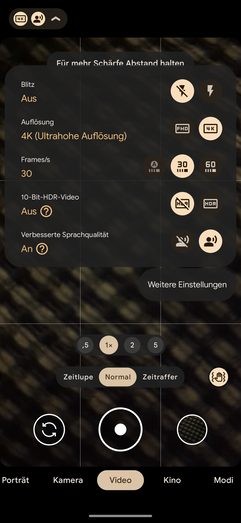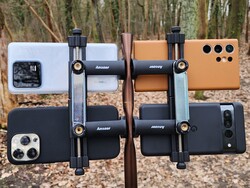The best camera smartphones of 2023: Video test - Laying a phone myth to rest
After scrutinizing the best camera smartphones of the year in our photo comparison, now it is time to take a look at the phones' video recording capabilities. If it was up to the YouTuber scene to decide a winner in this category, it would for sure be an Apple iPhone. In this test, however, we will be looking at whether an Android phone is able to live up to our expectations - as set in our photo camera test - for recording video.
Current Android flagships already have a clear advantage over the iPhone 14 Pro Max in one area - namely resolution. The Samsung Galaxy S23 Ultra and the Xiaomi 13 Pro don't just take videos in UHD quality, they also even allow video recording in 8K. We will see whether these phones are also able to impress in quality as they do in their numbers, even though the Apple phone and the Pixel 7 Pro don't have this feature.
We have summarized the camera modules and their respective video output in frames per second in the following table:
| Samsung Galaxy S23 Ultra | Google Pixel 7 Pro | Xiaomi 13 Pro | Apple iPhone 14 Pro Max | |
|---|---|---|---|---|
| Main camera | 200 MPix (f/1.7, OIS) | 50 MPix (f/1.85, 1/1.31", OIS) | 50 MPix (f/1.9, 23mm, 1“, OIS) | 48 MPix (f/1.78, 1/1.28", OIS) |
| 8K video recording | 24 fps, 30 fps | - | 24 fps | - |
| UHD video recording | 24 fps, 30 fps, 60 fps | 30 fps, 60 fps | 24 fps, 30 fps, 60 fps | 24 fps, 25 fps, 30 fps, 60 fps |
| 1,080p video recording | 24 fps, 30 fps, 60 fps, 120 fps, (960 fps slow motion) | 30 fps, 60 fps, (240 fps slow motion) | 30 fps, 60 fps, (1,920 fps slow motion) | 25 fps, 30 fps, 60 fps, (240 fps slow motion) |
| HDR support | 1,080p, 4K24, 4K30, 4K60 | 1,080p, 4K30, 4K60 | 1,080p, 4K24, 4K30 | 1,080p, 4K24, 4K25, 4K30, 4K60 |
| Software version | S918BXXU1AWBD | TQ1A.221205.011 | 14.0.12 | 16.3.1 |
Video recording on the smartphone cameras during the day
In all the test sections we focused on the flagship smartphones' main cameras for recording video. Looking at their tech specs makes it clear that the Samsung Galaxy S23 Ultra offers the most flexibility in its normal video modes - not only does it triumph in resolution (8K) but also in frame rate (120 fps in Full HD) when compared to the Pixel 7 Pro and the iPhone 14 Pro Max. Even so, the Samsung phone - as well as the three other test subjects - is due some criticism when it comes to its missing 120-fps option in UHD. This should long be standard in all high-end smartphones at this point. If you place great importance on this feature, take a look at the Sony Xperia Pro-I or the OnePlus 10 Pro.
Since additional lenses make for worse picture quality, we have disregarded telelenses and ultra wide-angle lenses in this test. All four flagship phones allow you to switch between lenses while recording. However, the Pixel 7 Pro doesn't use a telelens to zoom - instead, it enlarges the recording digitally. It also has to be noted that there is a significant change in white balance when switching between the different lenses.
UHD video picture quality
Now, we will take a look at multiple video samples taken during the day and without the HDR function switched on, as this feature is only pre-enabled on the iPhone 14 Pro Max and Pixel 7 Pro. For our taste, the Apple flagship's video was a little on the dark side and was calibrated a little too warmly in the house and window videos. The latter was also slightly overexposed. Together with the Xiaomi 13 Pro, the iPhone 14 Pro Max had the best sharpness. The Pixel 7 Pro lacked a bit in sharpness along with the Galaxy S23 Ultra, which showed a disappointing lack of sharpness in the house video. However, in total, the Galaxy S23 Ultra's results were relatively good. The Xiaomi 13 Pro's videos were slightly on the cooler side, which meant that faces had the tendency to be depicted too pale when compared to a warmer color balance.
With HDR mode activated, the Xiaomi 13 Pro's colors were too oversaturated and almost began to glow. The Samsung Galaxy S23 Ultra's color depiction of the red horse may be the most accurate, but the Samsung flagship lacked in white balance - something which the iPhone 14 Pro Max excelled at this time. Lovely levels of contrast and relatively neutral colors speak for the Apple phone, but its color depiction was sometimes less than decent - the ochre-coloured sand pit and the bright red horse were much better captured by the Pixel 7 Pro. The dynamics were slightly better on the Google phone as well.
8K video picture quality
When recording at extremely high resolutions such as 8K, we found the Xiaomi 13 Pro to do a much better job when it came to sharpness compared to the Samsung phone. The Galaxy S23 Ultra sharpened contours too much, which resulted in a slightly artificial look. Apart from that, both phones showed a great level of detail and good dynamics.


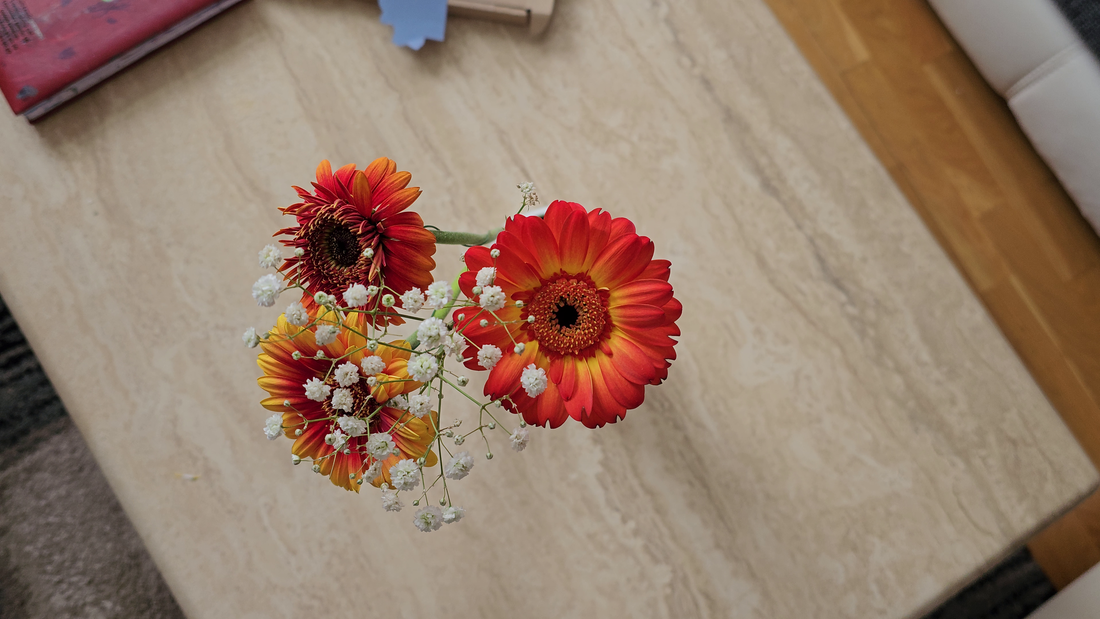
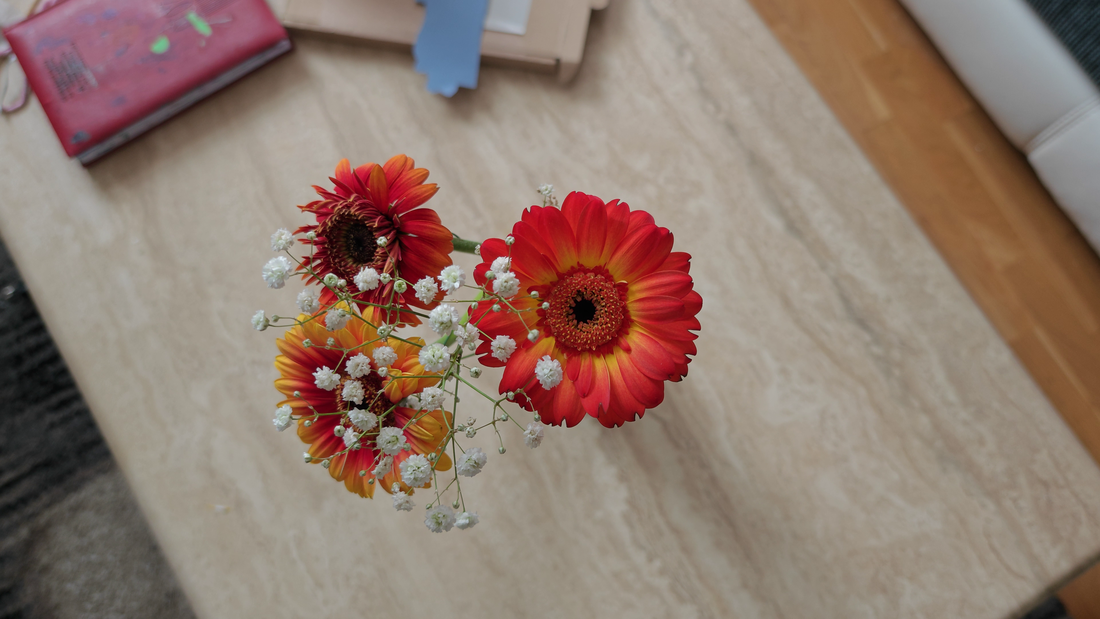
Recording video on the smartphone cameras in darkness
UHD video picture quality
In order to test the flagship smartphones' video performance in low light, we recorded videos using the 4K30 option in different lighting conditions. Samsung and Apple's camera software both offer the option to automatically reduce the frame rate in order to let in more light in darker conditions. We used this feature in our tests.
In the dark, the Xiaomi 13 Pro and the Galaxy S23 Ultra managed to capture more detail than their competitors and the cobblestones could be easily identified - while the Pixel 7 Pro and the iPhone 14 Pro Max had some issues with sharpness. However, the Xiaomi phone's video also became slightly unfocused towards the edges of the frame. The Pixel 7 Pro's video was noticeably softer in focus.
The Galaxy S23 Ultra captured the light and colors very accurately in the street video - but looking at the blinds makes it clear how poorly the iPhone 14 Pro Max and the Xiaomi 13 Pro performed, as they showed up slightly red in color. Strangely enough the Pixel 7 Pro depicted the houses in the same colors as it did in daylight - Google seemingly calculated the streetlights' influence on the image and adjusted the colors accordingly. Unfortunately, its video was a little grainier than its competitors'.
We can observe a similar result in the book videos: The Pixel 7 Pro and the Galaxy S23 Ultra portrayed the scene very authentically - for this video we set up a cream-colored lamp with a warm light in dark surroundings. The iPhone 14 Pro Max and the Xiaomi 13 Pro struggled with their color accuracy - especially in depicting the pink tones in the books. Again, the Pixel 7 Pro's video was slightly grainy.
Surprisingly, with the HDR function activated, Samsung and Apple both took the same route Google did in depicting the colors in the house - only Xiaomi interpreted the lighting situation similarly to its video with HDR deactivated. Due to a slight change in angle, all of the phones' videos showed a bit of lens flare on the streetlight. The Google Pixel 7 Pro suffered from this the least.
8K video picture quality
Similar to the videos taken in good lighting, the Xiaomi 13 Pro had slightly better sharpness in its high-resolution video than the Galaxy S23 Ultra. On the other hand, the Samsung phone had better color depiction - at least in the street video. All-in-all, the 8K videos were visibly darker and less detailed than the videos taken in UHD.
Image stabilization at UHD and 8K
For our test videos, we started out walking and sped up until we were running - then paused - and then started running again. In total, the OIS in combination with EIS did a great job on all four of the devices.
Even at a fast-paced walk, the Pixel 7 Pro's video was quite stable at 4K30 and did a good job of staying focused - we would say its results were similar to the Galaxy S23 Ultra. The iPhone 14 Pro Max was a little behind the two Android phones - contours in the video had a tendency to blur quite a bit. The same thing happened with the Xiaomi 13 Pro, except here the autofocus worked a little harder than its competitors as soon as it noticed a change in depth of field. When it came to focusing speed, all four test devices showed very strong results.
The results proved to be a bit different when using the 4K60 option. Here, we found the iPhone 14 Pro Max to be the most stable, but the Samsung Galaxy S23 Ultra and the Pixel 7 Pro also performed really well. The Xiaomi 13 Pro fell behind a little - during its fast change in focus, the colors and sharpness sometimes ended up being less than ideal. However, all of the flagships' videos seemed to behave a little more "nervously" at 60 fps.
At ultra-high-resolution 8K, the Galaxy S23 Ultra stabilized small wobbles better than the Xiaomi 13 Pro. Although, both videos proved to appear quite restless compared to the UHD videos and showed quite a few image errors and distortions. If you use a tripod or have a very steady hand, you should definitely still be able to achieve some really good results using this option.
The flagship smartphones' audio quality when recording video
We tested voice playback at a distance of 30 centimetres directly behind the smartphones. Samsung transmitted noises and voices very directly and presently and so did the Pixel 7 Pro - however, the Galaxy S23 Ultra sounded a little bit clearer. The Xiaomi 13 Pro's audio sounded very natural, but you could hear quite a bit of background noise. The iPhone 14 Pro Max fell somewhere in between the Pixel and the Xiaomi phone - voices were sometimes a little dull and were sometimes accompanied by some echoing.
Next, we tested the same thing 1.5 metres away from the devices. The Pixel 7 Pro and Galaxy S23 Ultra again transmitted voices very naturally - especially the Google phone - in comparison, the iPhone 14 Pro Max sounded very echoey and we also noticed a big difference in audio quality with the Xiaomi 13 Pro. Outside on windy days, the iPhone 14 Pro Max and the Xiaomi 13 Pro really struggled with wind sounds, but the Pixel 7 Pro filtered these out effectively.
The camera smartphones' software
When it comes to camera software, the Xiaomi 13 Pro and the Samsung Galaxy S23 Ultra feature a special Video Pro Mode alongside their normal video modes, where you can customize individual settings. Apple may offer a so-called ProRes function which enables high-quality video recording while keeping file sizes small - but this feature isn't available during UHD recording on our test model with 128 GB. This should be kept in mind if you are thinking about purchasing an iPhone 14 Pro. Google keep things the easiest with regard to camera software. Pixel 7 Pro users only have access to the most important base features.
Verdict - flagship smartphone video comparison
We took a look at image quality, stabilization as well as audio playback on a selection of top-of-the-range smartphones released in 2023. In doing so, we have to lay to rest a big phone myth, namely that Apple take the lead in all things videography. Of course, some users will already want to kick the iPhone 14 Pro Max and the Xiaomi 13 Pro off their video thrones due to their use of the super-slow USB 2.0 generation. We didn't go into this as much in our test, but a fast video copying speed, as can be seen on the Galaxy S23 Ultra, is not to be underestimated. However, we don't see this as a major dealbreaker, as many cloud-based or wireless options - in this case, AirDrop or Mi Share for the iPhone 14 Pro Max and the Xiaomi 13 Pro – make quick file sharing very possible.
It is impossible to determine a clear winner when looking at video recording - the same as it was for photography. The times when the iPhone was seen as being an immovable object are clearly over - at the latest with the release of 2023-generation Android smartphones.
All-in-all, was the iPhone 14 Pro Max still the most consistent and in turn the best video phone in our comparison test? Probably - but not by much. Features that speak for the iPhone include the ProRes function in 10-bit and Dolby Vision support in all formats. When it comes to video quality, it is a matter of personal taste - as the Android phones often actually deliver better results than their Apple competitor. Especially since the iPhone 14 Pro Max doesn't support 8K video recording - which usually represents a big jump in quality within this smartphone generation and the feature has actually become quite useful.
Fortunately, the "affordable" smartphone market is well represented by the Google Pixel 7 Pro, which offers a great video alternative to its more expensive competitors. When it comes to video recording, the Pixel 7 Pro actually proved to be even better in relation compared to our photo test comparison, as the phone even managed to reach top-tier levels in some areas of our test (audio recording, image stabilization).
As in all our camera tests at notebookcheck.com, we have stored all the original files in this video comparison, so you can compare and make up your own opinion. You can give your personal opinion in the comment section below the test.
Prices & availability
The Pixel 7 Pro can be purchased directly from the Google Store for $899, as well as from other major retailers like Amazon.
The Samsung Galaxy S23 Ultra starts at $1,199.99 for the version with the smallest storage and can be purchased from Samsung or on Amazon.
The Xiaomi 13 Pro is currently not available to buy in the US.
The iPhone 14 Pro Max in all its color and storage variants can be bought directly from Apple for upwards of $1,099 or on Amazon.




